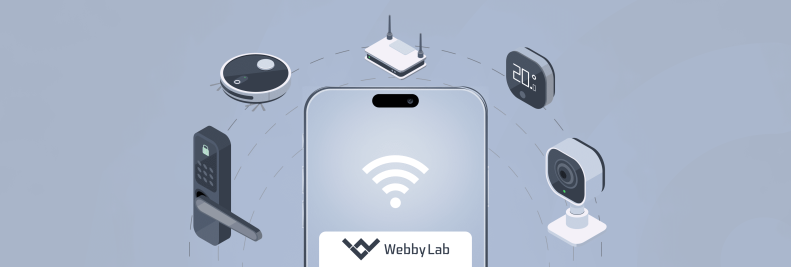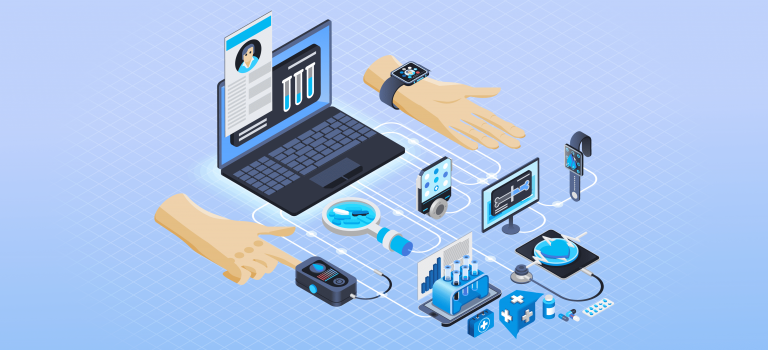IoT in Consumer Electronics: Use Cases & Future Prospects
Written by:

Kostiantyn Oliynyk
Head of IoT at Webbylab
With a robust academic background in Telecommunication Systems Engineering, I apply my knowledge to lead innovations in the IoT domain. Starting as the first team member in the newly formed IoT department at WebbyLab, I've spearheaded its growth, fostering the expansion into embedded and hardware development alongside our core software projects. My dedication lies in pushing the boundaries of IoT technology, fostering a culture of innovation and excellence that profoundly impacts our clients' operational success.
1. Smart Speakers: Devices like Amazon Echo, Google Home, or Apple HomePod are voice-activated virtual assistants that can perform various tasks, control smart home devices, answer questions, and play music.
2. Smart Home Security Cameras: These devices offer remote monitoring and surveillance of your home, allowing you to view live feeds and receive alerts on your smartphone.
3.Smart Thermostats: These devices allow users to remotely control and schedule the temperature of their homes, leading to energy savings and increased comfort.
4. Smart Lighting: IoT-enabled smart bulbs and smart switches offer remote control, scheduling, and automation of lighting in your home.
5. Smart Appliances: IoT-connected appliances like refrigerators, ovens, washing machines, and robotic vacuum cleaners provide enhanced functionality and remote management.
6. Wearables: Devices like smartwatches, fitness trackers, and health monitors track various health and fitness metrics, allowing users to stay on top of their well-being.
7.Smart Locks: These IoT-enabled locks allow users to control access to their homes remotely, providing enhanced security and convenience.
8. Connected Entertainment Systems: Smart TVs, streaming devices, and gaming consoles can be integrated into smart home ecosystems, allowing users to control and access content seamlessly.
9. Smart Plugs: These devices can be plugged into traditional outlets and turn ordinary appliances into smart devices, enabling remote control and automation.
10. Smart Home Hubs: Central control hubs help manage and coordinate various IoT devices within a smart home ecosystem.
11. Connected Health Devices: IoT-enabled health devices, such as blood pressure monitors, glucose meters, and pill dispensers, can help individuals manage their health conditions more effectively.
12. Smart Garden Devices: IoT devices for gardening, such as smart irrigation systems or plant sensors, help users optimize water usage and monitor plant health.
Very different approaches to implementation. For consumer applications, the most important factors are often affordability and functionality, whereas for industrial applications, reliability and resistance to failures are more crucial. Consumer devices need to be easy to install and operate, while for industrial devices, installation and maintenance are distinct tasks that require dedicated resources and specialists. Consumer electronics often come as ready-made black box devices that solve a specific task, while industrial solutions more frequently involve large mechanisms that can be reconfigured to perform various tasks, or even expanded modularly to scale functionalities.
Choose Consumer IoT devices that meet your specific needs, have strong security features, and are compatible with your existing technology, while considering factors like user-friendliness and long-term costs.
Voice assistants like Google Home and Alexa-powered speakers are very popular. The Google Nest smart thermostat is highly sought after. Various Wi-Fi plugs and Wi-Fi relays like Sonoff are also widely used. Wireless environmental sensors like the Aqara Zigbee sensors for temperature, humidity, light, water leakage, and more are quite popular. LED fixtures and LED bulbs are in high demand, as well as built-in smart light bulbs in different socket types.







